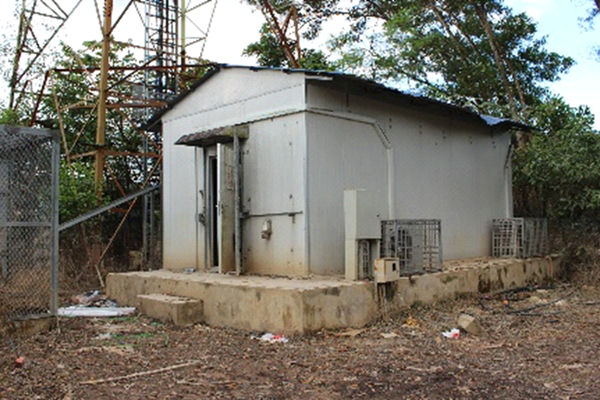Cost-Effective Strategies for Assessing and Recovering IT Equipment Losses

In environments like data centers, a systematic approach to diagnosing and resolving equipment issues is crucial. This starts with a detailed visual inspection to identify any visible physical problems, such as damaged components or contamination. This often leads to further component-level testing to determine the extent of the issue.
Evaluating IT Equipment Losses and Recovery
When handling IT equipment losses, it's essential to determine if the equipment can be repaired or if it needs replacement. Most IT equipment is repairable, with decisions based on cost-effectiveness and reliability. Factors such as the remaining life expectancy of the equipment, warranty availability, and the potential for using refurbished parts with warranties are considered. The cost of temporary or parallel repairs and the impact on business operations, including business interruption and staff time, also play a role.
Accurately assessing losses requires understanding the technical jargon and acronyms associated with IT equipment. Terms like RAID (Redundant Array of Independent Disks) are crucial for comprehending the configuration and redundancy of storage systems. Different RAID levels, such as RAID 1, RAID 5, and RAID 6, offer varying degrees of redundancy and performance, which help determine the extent of data loss and necessary recovery steps. The presence of virtual machines (VMs) on physical servers adds complexity, as data recovery costs can vary significantly based on the number of VMs involved.
Cost-Effective IT Equipment Recovery Strategies
Data recovery is a critical aspect of managing IT equipment losses and can be an expensive endeavor. Professional data recovery services typically charge between $800 to $2000 per drive, with costs escalating with expedited service, multiple drives or virtual machines involved. Understanding the cause of data loss—whether due to hardware failure, software issues, environmental factors, or human error—is essential. Implementing a robust backup strategy such as full, incremental, or differential backups, mitigates the risk of data loss. Verifying that backups function correctly and having a disaster recovery plan in place is equally important.
Assessing Perils and Environmental Risks
IT equipment can be affected by various perils, such as lightning, power surges, power loss, and environmental factors like temperature and contamination. Each type of peril requires a different approach to assessment and recovery. For instance, lightning damage typically follows a specific power path and is instantaneous, while power surges can cause widespread damage to electrical components. Understanding the behavior of the equipment and the conditions under which the loss occurred is key to determining the cause and extent of the damage. The presence of surge protectors, uninterruptible power supplies (UPS), and other protective measures can influence the assessment.
Component-Level Testing and Root Cause Analysis
Testing each component independently is a crucial aspect of the diagnostic process. This testing, whether conducted in the field or a controlled lab environment, helps verify the operation of each part and gather concrete evidence to support the diagnosis. Comparing the performance of mechanical drives versus solid-state drives or using tools like heaters to induce failures can help identify the root cause of an issue. The ultimate goal is to gather factual evidence to determine whether the equipment can be repaired, thus avoiding unnecessary replacements and reducing costs.
Importance of Log Files in Diagnostics
Log files play a significant role in diagnosing IT equipment issues. These files provide an unbiased historical record of a device's performance and any problems it has encountered. Obtaining log files before, during, and after a loss event is essential for a comprehensive understanding of the issue. Challenges arise when log files are cleared or only partially provided, obscuring the facts and complicating the diagnostic process. Accurate and complete log files are indispensable for making informed decisions about repairs and replacements.
Case Study: County Jail Surveillance System
A practical example of this diagnostic approach can be seen in a case study involving a county jail's surveillance system that failed during a power outage caused by the Texas freeze. Initially, it was believed that the entire system needed to be replaced, a costly endeavor. Upon closer inspection, it was discovered that the issue was due to bad capacitors in the power supplies of surveillance systems. Replacing these capacitors restored the system at a fraction of the initial estimated cost. This case underscores the importance of thorough diagnostics and the potential for significant cost savings through targeted repairs.
Understanding Hard Drive Interfaces and Misconceptions
Understanding the technical details of different types of hard disk drives and their interfaces is also crucial for accurate testing and cost estimation. Differences between IDE, SATA, SCSI, and SAS drives, as well as factors like drive speed and capacity, can impact the diagnostic process. Addressing misconceptions about data recovery, such as the belief that viruses and ransomware cause physical damage to equipment, is essential. Accurate information and evidence are crucial for making informed decisions about IT equipment repairs, particularly when dealing with data recovery companies and ensuring the integrity of their claims. Focusing on repair rather than replacement can achieve significant cost savings.
A Strategic Approach to IT Equipment Losses
Managing IT equipment losses demands a strategic approach that integrates technical expertise s. Key elements include accurately assessing the extent of the loss, evaluating repair versus replacement options, understanding technical configurations, and implementing a sound data recovery and backup plan. This method enables businesses to handle losses efficiently, reduce downtime, and maintain operational continuity.
Inspection and Diagnosis Best Practices
The inspection and diagnosis of IT equipment issues should follow a meticulous, evidence-based procedure. This involves initial visual inspections, detailed component-level testing, and the use of log files to gather precise information for informed decision-making.
Practical examples, like the county jail surveillance system, underscore the importance of thorough diagnostics and highlight opportunities for cost-effective repairs. Prioritizing repair over replacement and ensuring robust data recovery processes can lead to significant savings and enhance the reliability of IT infrastructure.
Partner with Envista Forensics for Expert IT Equipment Loss Evaluation
When it comes to IT equipment losses, precision and expertise make all the difference. At Envista Forensics, our experts combine deep technical knowledge with forensic insight to deliver accurate, unbiased assessments that support claims resolution, recovery planning, and litigation.
Whether you're dealing with data loss, equipment damage, or evaluating repair vs. replacement, our engineers provide comprehensive diagnostics—from component-level testing to data recovery validation and root cause analysis.
We work with insurers, legal teams, and business owners to ensure every decision is backed by evidence and tailored to minimize downtime and cost.
Contact Envista Forensics today to learn how our forensic engineering and IT experts can support your case, protect your bottom line, and help restore operational continuity with confidence.
Our experts are ready to help.




